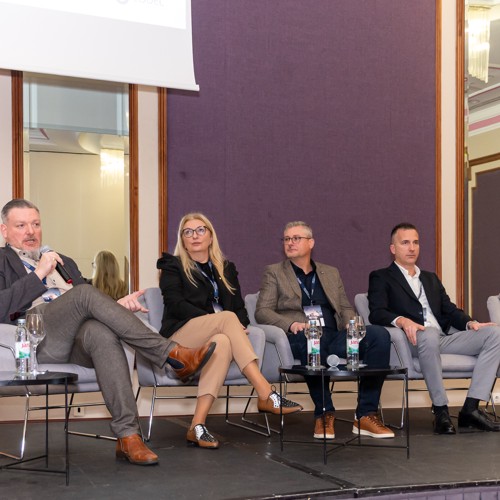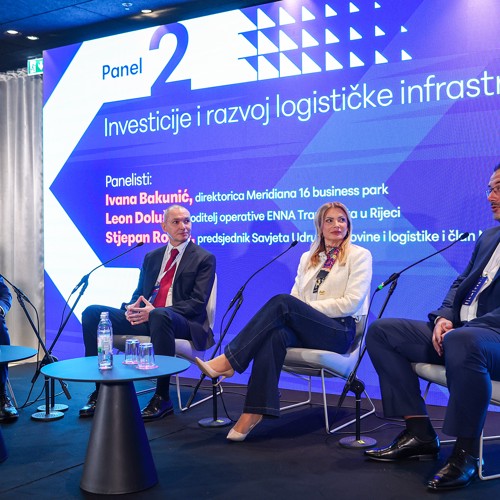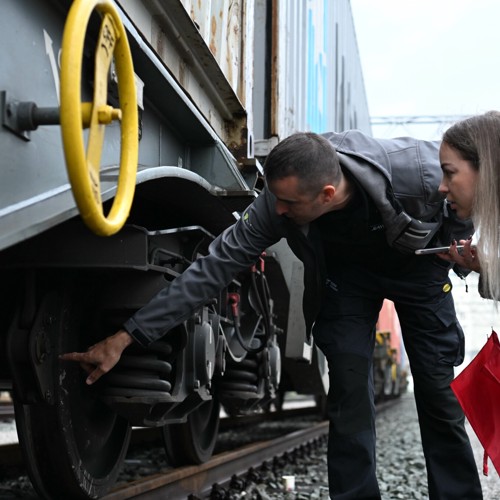First commercial container vessel docks at Rijeka Gateway
Terminal marks the start of operational phase
Date publishedSeptember 10, 2025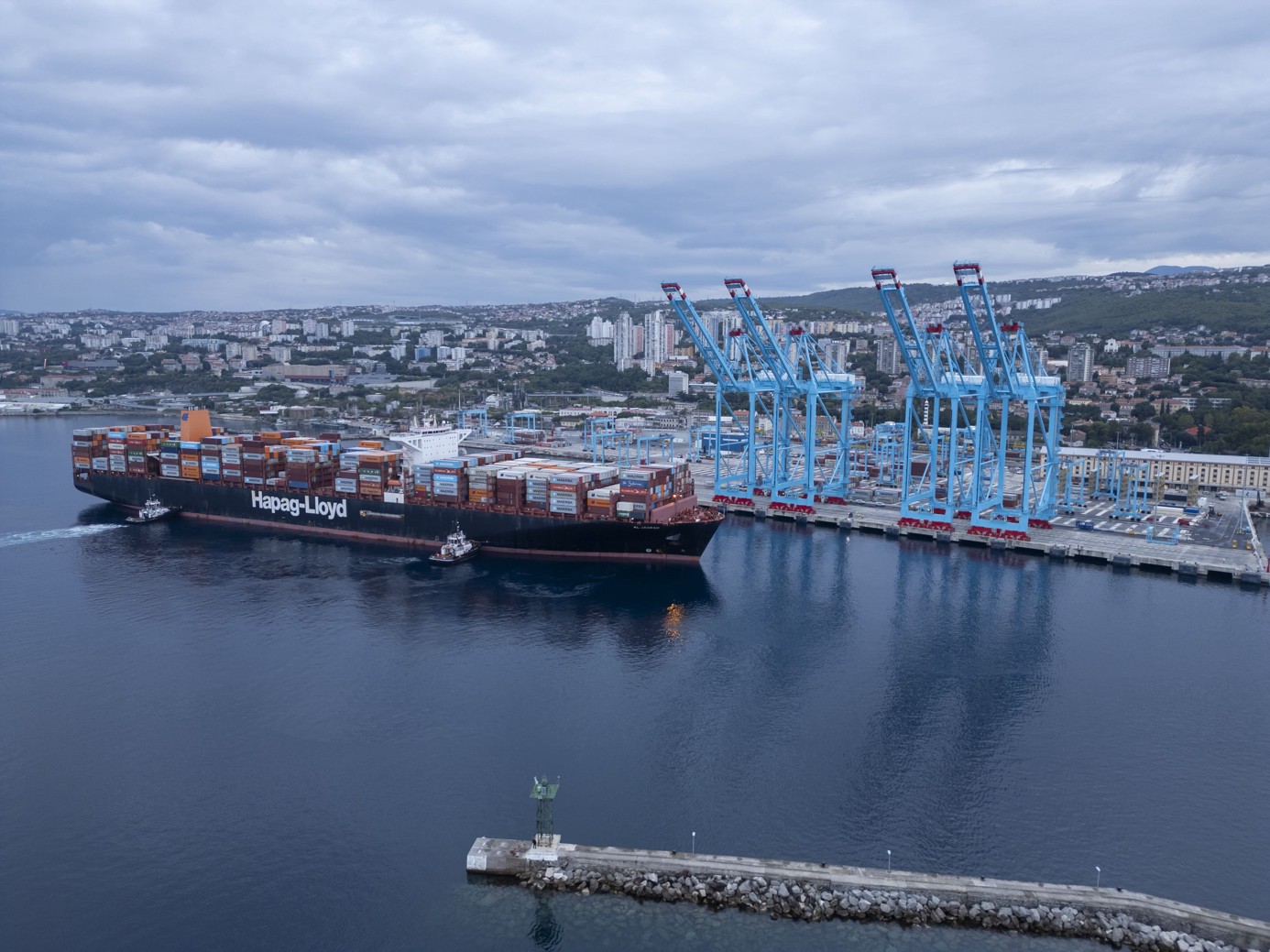
Rijeka, September 10, 2025 – Rijeka Gateway, the most modern and technologically advanced container terminal in this part of Europe, today marked the arrival of its first commercial vessel, Al Jasrah. Following months of successful trial operations during the summer, this event symbolically signals the official start of the terminal’s operational phase.
The first commercial vessel to berth at Rijeka Gateway is Al Jasrah, measuring 368 meters in length and 51 meters in width. The vessel arrived in Rijeka from Port Said, Egypt, as part of the Asia–Europe route. The ship’s captain received a commemorative recognition presented by Rijeka Gateway representatives Peter Corfitsen and Tomislav Rosandić, together with Croatian Minister of the Sea, Transport and Infrastructure, Oleg Butković.
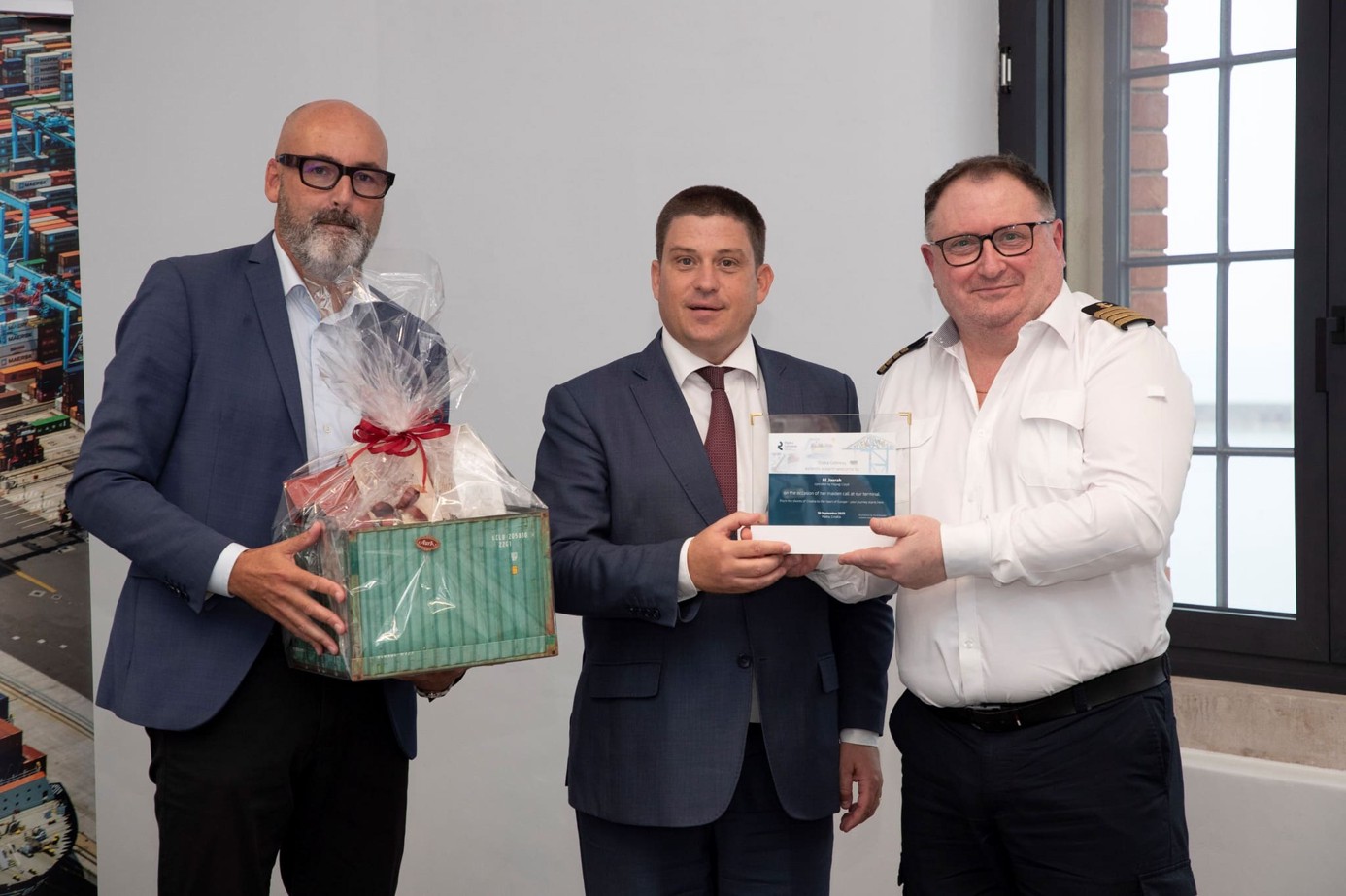
Minister of the Sea, Transport and Infrastructure Oleg Butković emphasized that this is a historic moment not only for Rijeka and the Primorje-Gorski Kotar County but also for the whole of Croatia. The arrival of the first vessel at one of the most modern terminals in this part of Europe proves that all the effort invested has paid off. He stressed that the journey to this day was demanding—from securing financing and building the access road to signing the concession agreement—and thanked all involved for completing the project on time and without delays. He highlighted that, once at full capacity of one million TEU, this terminal will open a new chapter in the development of Rijeka’s transport sector and Croatia’s economy as a whole.
“Today is a great day for the Port of Rijeka, the Rijeka transport corridor, and Croatia’s entire port and transport system. We now have the first vessel berthed at a new, sustainable, ‘green,’ and technologically most advanced container terminal in this part of Europe. When we signed the concession agreement with Rijeka Gateway in November 2021, I said it was the largest agreement in the history of the Port of Rijeka, the most significant in importance and value—for this city, for the Port Authority, for the port, the transport corridor, and the entire Croatian port and transport system. A strong, financially solid concessionaire, an experienced global terminal operator dedicated to sustainable development, has brought substantial investment into our port system. But not only that—it has also brought invaluable know-how for all of us. This is the largest, most important, and most complex project in our history, a generational project for the Port of Rijeka. When we add up all investments in the terminal and transport infrastructure—from roads to the rail interface in and around the port—we reach about €600 million. This includes the 400-meter quay financed by a World Bank loan, the construction of the DC 403 access road, internal port roads, the new intermodal terminal, the rail interface for the new terminal, and finally, the concessionaire’s investment in the hinterland and terminal equipment—from STS cranes, storage and gantry cranes for rail transshipment to other equipment. This is a complex joint investment project of the Croatian Government and Ministry of the Sea, Transport and Infrastructure, the Port of Rijeka Authority, HŽ Infrastruktura, Croatian Roads, and the Rijeka Gateway concessionaire. The concessionaire is investing €380 million into our port system, creating new jobs and employing 250 young professionals so far, positioning Rijeka’s port and the entire Croatian transport system as a leader in the Northern Adriatic and the wider region. To the leadership and team of Rijeka Gateway, APM Terminals/Maersk Group, and ENNA Logic, thank you for the excellent cooperation, congratulations on the professionally managed project, and I wish you successful operations for the next fifty years,” said Denis Vukorepa, Director of the Port of Rijeka Authority.
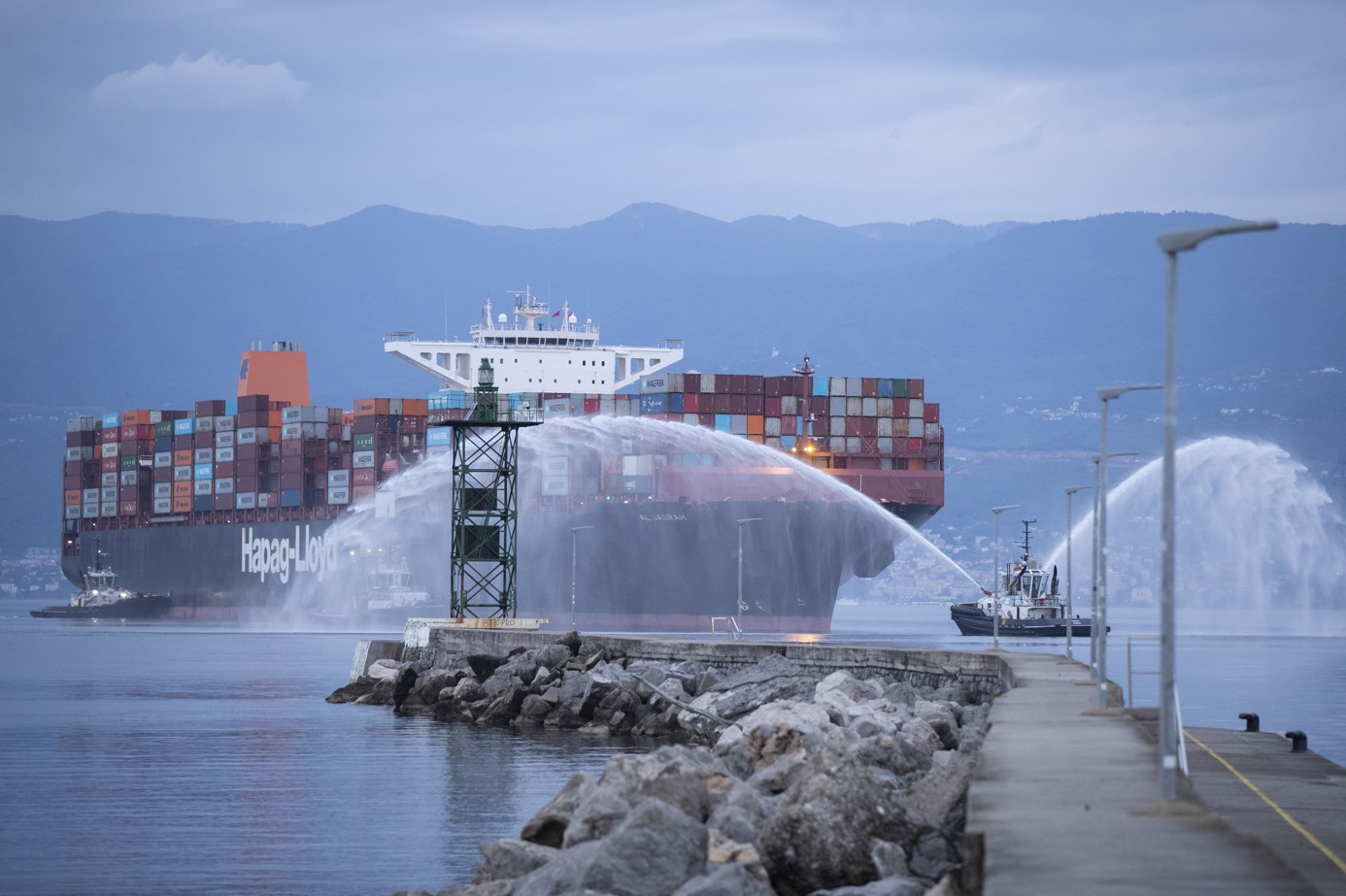
“This terminal is more than just infrastructure. It is a symbol of Rijeka as a modern, sustainable, and technologically advanced port that creates value and drives both the local and national economy, while caring for the community and environment. But it is not equipment and technology that make a great terminal—it is people. We are proud of our 250 employees, and soon we will have 300. In this operational phase, we must prove that everything we have built—from infrastructure to the team—can function daily at the highest level of operational excellence expected by our customers. I am confident that Rijeka Gateway can become one of the best terminals in this part of the world, a source of pride for Rijeka and all of Croatia,” said Peter Corfitsen, CEO of Rijeka Gateway.
“Our commitment to quality training has been one of the foundations of success. So far, the team has completed more than 50,000 hours of training, including advanced simulations that played a key role in preparing for daily challenges and operations. In addition, our experts have visited numerous terminals worldwide to study them in detail and implement the best global standards in our work. And our vision goes beyond the quay. Reliable rail connectivity is extremely important for our terminal, so we strongly support the construction of the lowland railway that will enable Rijeka to become the entry point for Central and Southeastern Europe. Currently, our plan is to handle 60 percent of terminal-related traffic by rail, and we look forward to the potential to increase this share further, as it will strengthen both the competitiveness and sustainability of the terminal,” emphasized Tomislav Rosandić, CFO of Rijeka Gateway.
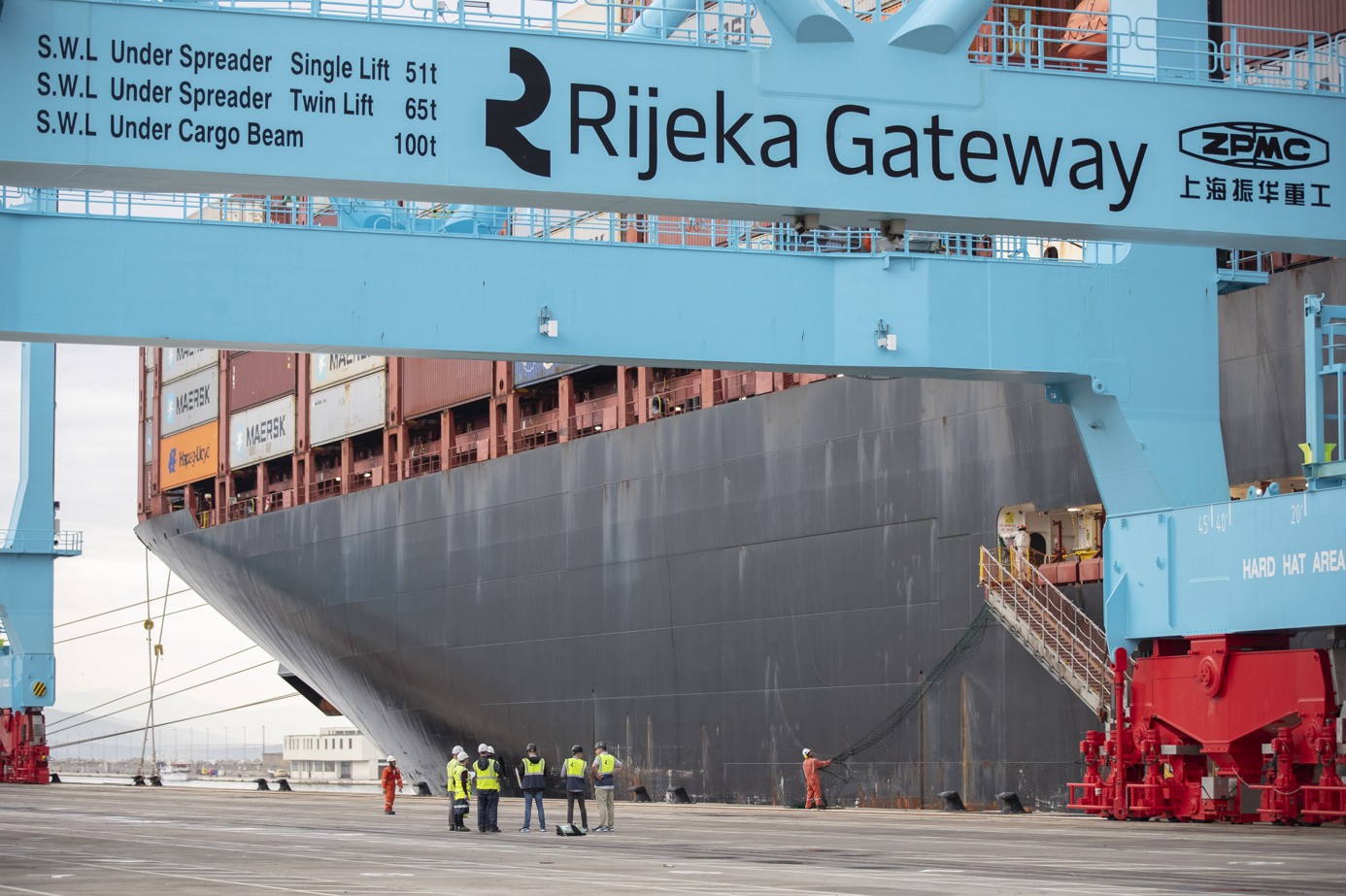
The Rijeka Gateway Terminal has been included in the Gemini Cooperation between Maersk and Hapag-Lloyd, on the EA12 service, making Rijeka a key terminal on one of the world’s most important shipping routes. Regular vessel calls are expected to strengthen Croatia’s connectivity to global supply chains and contribute to economic growth across the region.
“We are pleased to welcome Rijeka Gateway into our reliable ocean network, further strengthening connectivity and delivering greater value to our customers and their supply chains. Strategically located on the Adriatic coast and supported by impressive infrastructure, Rijeka Gateway offers direct access to Croatia and its hinterland, positioning itself as a key entry point for emerging markets. As trade patterns shift and businesses seek more agile and resilient logistics solutions, the importance of well-connected, modern, and reliable infrastructure becomes clear—and Rijeka Gateway is uniquely positioned to meet these needs, delivering tangible benefits to our customers,” stated Johan Sigsgaard, Chief Product Officer, Ocean, A.P. Moller – Maersk.
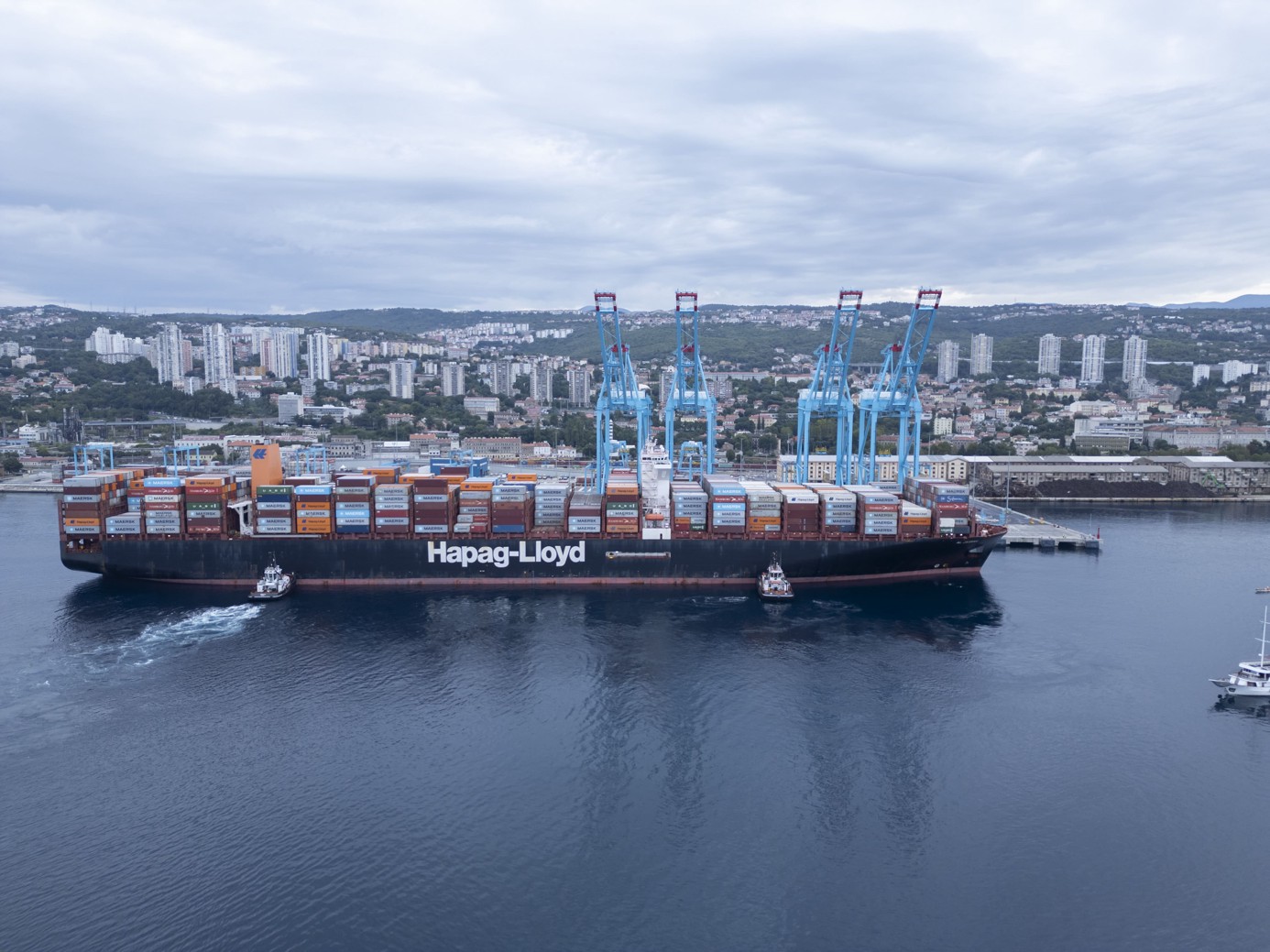
The beginning of operations comes after two years of construction and equipping of the terminal, which represents the largest private investment in logistics in Croatia, worth €380 million, resulting from a joint venture between APM Terminals and ENNA Group. In its first phase, the terminal features 400 meters of quay, a depth of 20 meters, and an annual capacity of 650,000 TEU. After the planned expansion, this will grow to 680 meters of quay and a capacity of over one million TEU. The terminal is equipped with state-of-the-art infrastructure: four remotely operated ship-to-shore cranes (STS), 15 rubber-tyred gantry cranes (RTG), two rail-mounted gantry cranes (RMG), and 28 terminal tractors. All systems are integrated into a single control center, ensuring a high level of safety, efficiency, and sustainability. Terminal operations will be managed with cutting-edge technology, full automation, and renewable energy, making Rijeka Gateway the first terminal of its kind in the Adriatic region.
Alongside the terminal, extensive renovation of Warehouse 22 in the Metropolis complex has also been completed. This historic building, restored under strict conservation supervision and equipped with state-of-the-art anti-seismic measures, will serve as Rijeka Gateway’s headquarters, giving new value to Rijeka’s cultural heritage.

